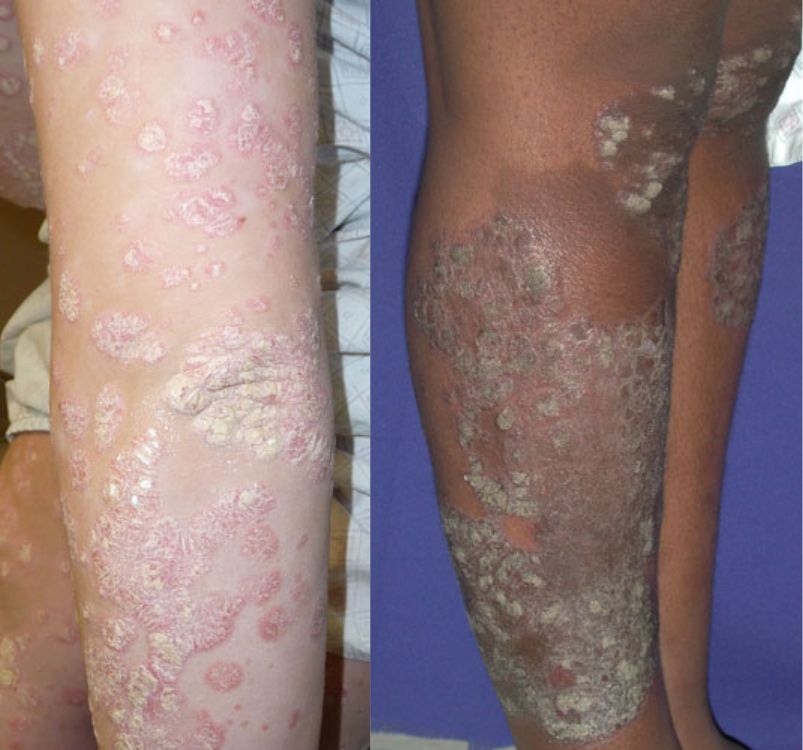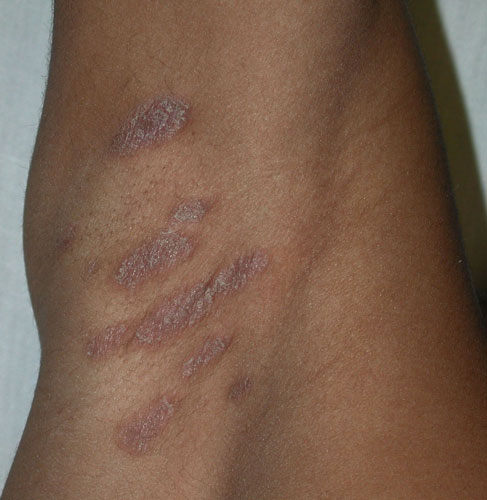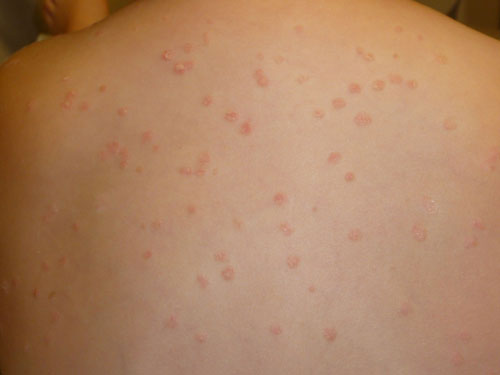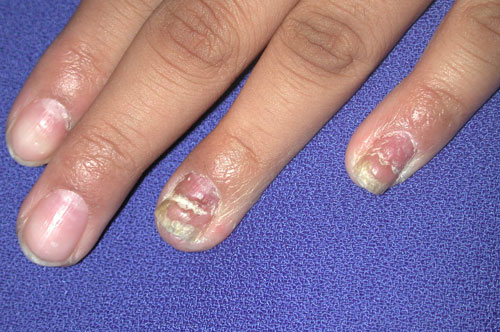Psoriasis is a chronic skin condition that affects both children and adults. It causes a rash that can appear anywhere on the body, including the nails.
The rash from psoriasis can be very bothersome and frustrating. It can affect a child’s or teen’s mood, making the sad or depressed or angry. It is important for them to know that psoriasis is very treatable so that they will not feel unhappy or anxious.
Here are some common questions you may have about psoriasis.
What does a psoriasis rash look like?
In light-skinned children, the spots of rash look pink-red, while in children with darker skin tones the rash is more purple or brown. In most cases, there are thick white flakes on the surface of the spots. A rash from psoriasis can appear in different patterns (see “Types of psoriasis rash,” below).
What causes psoriasis?
Psoriasis can come on suddenly and for no particular reason. Children with psoriasis sometimes have family members who also have psoriasis. In some children, psoriasis may appear after an illness, especially after a case of strep throat.
Psoriasis is NOT contagious and cannot spread from person to person.
What are signs and symptoms of psoriasis?
The first sign of psoriasis is the rash. The rash of psoriasis can appear anywhere on the skin. Examples include the scalp, behind the ears, the groin, the palms of the hands, and soles of the feet. Fingernails and toenails can also be affected.
In some people, only a few areas of the body may be affected. In others, the whole body can be covered with patches of psoriasis. The rash may be itchy for some kids.
How is psoriasis different than eczema?
Psoriasis and eczema are both chronic conditions that can cause dry, itchy, inflamed skin. While the rashes may seem similar, there are differences in how they look, where they develop, and the intensity of the itch.
Types of psoriasis rash
There are different patterns of the psoriasis rash. These include plaque psoriasis, inverse psoriasis, guttate psoriasis, and nail psoriasis:
Plaque Psoriasis is the most common type of psoriasis. There are thick or thin reddish or purplish patches with stuck-on white flakes. These patches are most common on the elbows and knees and sometimes the scalp, but can be anywhere on the body.

Inverse Psoriasis is when the rash patches are in the skin folds, such as the armpits and groin. Because these areas of the body are usually moist and sweaty, the surface flakes are often missing.

Guttate Psoriasis looks like small, raindrop-shaped spots with a little bit of white flaking on top. This pattern of psoriasis is sometimes seen after strep throat or other minor infections.

Nail Psoriasis affects the fingernails and toenails causing the nails to have small pits of grooves or to lift up at the edge or to become yellow brown in color.

How is psoriasis treated?
There is no cure for psoriasis. However, there are very effective psoriasis treatment options to keep the rash as clear as possible.
Medications
Topical medications are products that you can put on “top” of your skin, like creams or ointments or solutions or shampoos. Depending on where the rash is, there are many kinds of topical medicines that your child’s doctor can prescribe to help the psoriasis rash.
If topical medications are not helpful enough or too difficult to use, there are also oral medications (taken by mouth) or injections (shots). The oral medications and shots are called “systemic” medications. That’s because they work from the inside and treat the whole system at once. If using the pills or shots, there are often blood tests the doctor will need to check so that your child can safely take these medicines.
Phototherapy
Another type of treatment that may be recommended is called phototherapy. Phototherapy uses limited types of ultraviolet light rays on the skin to clear the rash. This light comes out of specialized machines and requires visits to the doctor’s office 2-3 times every week for several months.
Is psoriasis related to other medical conditions?
Sometimes people with psoriasis can be more at risk of having other medical conditions. These include:
Arthritis
Arthritis is irritation in the joints that can cause the joints to be swollen, stiff, red, and painful. There are many types of arthritis, but psoriasis is a condition that can cause a form of arthritis as well as the skin rash. The joint pain is usually worst in the morning and gets better after moving the joints around. Some children with psoriasis may develop psoriatic arthritis.
Hyperlipidemia & diabetes
Hyperlipidemia is when there are high levels of fat in the blood. Diabetes is when there are high levels of sugar in the blood. Children with psoriasis seem to have a higher chance of developing these problems as they grow up.
Inflammatory bowel disease (IBD)
IBD is a condition that affects the intestines, causing belly pain and diarrhea. Some children with psoriasis may develop IBD.
It’s important for your children to see their pediatrician regularly to monitor their overall health. If your child has psoriasis and you notice they complain of joint pain or belly pain a lot, be sure to discuss these concerns with your child’s doctor.
When to contact your pediatrician
Please see your child’s doctor if you have any questions or concerns about your child’s skin. If your pediatrician diagnoses psoriasis, your child may be referred to a skin doctor (dermatologist).
More information
- Eczema in Babies in Children
- 12 Common Summertime Skin Rashes in Children
- Being Diagnosed With Psoriasis (National Psoriasis Foundation)
